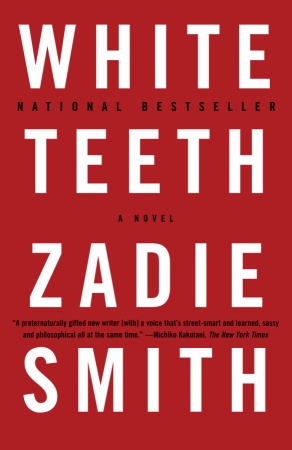Hybridity gets fashionablePosted in Articles, Book/Video Reviews, Literary/Artistic Criticism on 2011-05-10 03:09Z by Steven |
Andréia Azevedo Soares
LabLit.com: the culture of science fiction & fact
2009-10-24
The novel White Teeth offers a different perspective on science
Even if you haven’t read the novel White Teeth by Zadie Smith, you probably remember it—unless you were lying comatose at the beginning of this century. White Teeth was considered to be the literary find even before it was fully written and, immediately after its release, rapturous reviews popped in the media like wild rabbits. Critics praised the “multi” issues cleverly addressed in this multi-layered, multicultural and multiethnic story—but overlooked much of the science that lies in it. Yes, although you may not clearly recall it, there is a scientist in White Teeth.
As a fictional character, Marcus Chalfen seems to represent this century’s emerging group of biotechnology researchers. It is his wife, Joyce Chalfen, who introduces him to the readers. Joyce portrays her husband as a geneticist deeply focused on both social and scientific progress. Promoting the chimeric fusion of embryos, it was possible to generate “mice whose very bodies did exactly what Marcus told them”. Dr. Chalfen believes that he controls every single cell of the Future Mouse©, his ultimate genetically engineered creation.
…White Teeth is a story about many things. Zadie Smith knits together, in a tragicomic epic, a variety of tantalizing themes such as gender, race, class, eugenics and religion embedded in a saga of three multicultural families in North London. One of them are the Chalfens (who have Jewish ancestry), and the two others are the Joneses and the Iqbals. The patriarchs of the latter families, the British Archie and Indian Samad, happen to be close friends who met by chance during the Second World War and who cherished ever since a mutual and sincere friendship. Samad is married to an Indian woman and is a father of twins, Magid and Millat. His sons share the same genetic material, but each one responds to the environment in uneven ways. Archie is married to a Jamaican woman and is the father of Irie. He considers life to be a matter of chance. Every time Archie must to make a decision, he tosses a coin. His daughter, Irie, also believes in accidents but feels herself a victim of “genetic fate”. Like Zadie Smith herself, Irie Jones carries in her veins a double ancestry: “Irie believed she had been dealt the dodgy cards: mountainous curves, buck teeth and thick metal retainer, impossible Afro hair.”
In White Teeth, we should understand hybridity in its broader cultural meanings—and these meanings are not necessarily correct in scientific terms. Here, hybridity can be a chimera produced in a lab but also racial or cultural mixing. In that sense, it is possible to say that London is, due its multicultural or multiethnic condition, a sort of capital of hybridism. Different ingredients are combined in the same pot and the result can be both fun and tragic, as Zadie Smith shows. The author’s attitude towards her characters and plotline is also a hybrid one—and, if we consider that the tragicomic is also a mixture of genres, this is also quite telling.
People are enduringly enthralled with hybridity. In the past, naturalists believed that species, when intercrossed, were doomed to be infertile “in order to prevent the confusion of all organic forms”, as Darwin wrote in his The Origin of Species. In fact, sterility turned out to be associated with close interbreeding rather than hybridity. Now there is a relatively fresh idea that people who have different racial or cultural backgrounds are tailored to be more tolerant, cosmopolitan, creative and so forth. Or even more successful—like Barack Obama or Zadie Smith herself…
Read the entire essay here.


